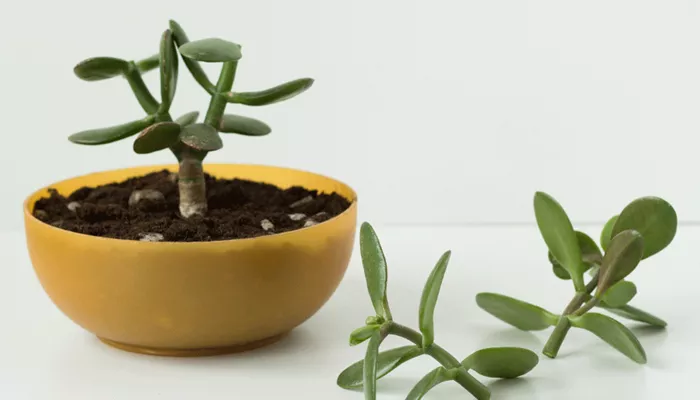Succulent cuttings can be a delightful addition to any garden or indoor space. These hardy plants are known for their water-storing abilities, making them relatively low-maintenance compared to other plants. However, when it comes to watering succulent cuttings, understanding the right frequency and technique can make all the difference between thriving and wilting. This article will explore how often to water succulent cuttings, offering a detailed guide to ensure your cuttings stay healthy and vibrant.
Understanding Succulent Cuttings
Succulent cuttings are parts of a succulent plant that have been separated to grow into new plants. These cuttings can be leaves, stems, or even offsets. Unlike mature succulents, cuttings need special care to develop roots and establish themselves. Watering is a crucial aspect of this care, and getting it right is essential for the success of your cuttings.
The Importance of Proper Watering
Watering succulent cuttings correctly is vital for their root development and overall health. Overwatering can lead to rot, while underwatering can stunt growth and cause dehydration. Balancing these needs requires an understanding of the cuttings’ requirements and environmental conditions.
Factors Influencing Watering Frequency
1. Type of Succulent
Different succulent species have varying water needs. For instance, Echeverias and Jade Plants may require different watering schedules. Researching the specific needs of your succulent species will help tailor your watering routine.
2. Climate and Environment
The climate and environment where the cuttings are placed greatly impact their watering needs. In a hot, dry climate, cuttings may require more frequent watering. Conversely, in cooler or more humid environments, the frequency should be reduced.
3. Potting Medium
The type of potting medium used can affect how often you need to water your cuttings. Well-draining soils, like those made with perlite or sand, dry out faster and require more frequent watering. In contrast, soils with high organic content retain moisture longer.
4. Size of the Cutting
Smaller cuttings generally need less water compared to larger ones. The size of the cutting impacts how quickly it uses up the stored moisture. Smaller cuttings are also more susceptible to rot, so it’s crucial to be cautious with watering.
5. Container Type
The type of container can influence how often you need to water succulent cuttings. Containers with drainage holes allow excess water to escape, preventing waterlogging. Without proper drainage, the risk of root rot increases, making it essential to adjust your watering routine accordingly.
Watering Guidelines for Succulent Cuttings
Initial Watering
When you first take succulent cuttings, avoid watering them immediately. Allow the cut end to callous over for a few days. This helps prevent rot by sealing the wound. After the cut end has calloused, you can start a very light watering routine.
Establishing a Routine
Once the cuttings have established roots, usually within a few weeks to a couple of months, you can begin a more regular watering schedule. Here’s a general guideline to follow:
During the Rooting Phase: Water the cuttings lightly once every two weeks. Ensure the soil is completely dry before watering again.
After Root Establishment: Increase the watering frequency to once every 1-2 weeks. This will support the growing roots and help the cutting establish itself as a new plant.
Seasonal Adjustments
Adjust your watering schedule based on the season. Succulents generally need less water during the winter months when they are in their dormant phase. During this time, you may only need to water once every 3-4 weeks.
Signs of Overwatering and Underwatering
Overwatering Symptoms
Root Rot: Yellowing leaves and a mushy texture can indicate root rot.
Wilting: Despite the soil being wet, leaves may droop.
Mold: Fungal growth on the soil surface can be a sign of excessive moisture.
Underwatering Symptoms
Wrinkling: Leaves may appear shriveled or wrinkled.
Leaf Drop: Dry, crispy leaves that fall off easily.
Stunted Growth: Slow or halted growth can be a result of insufficient water.
Tips for Effective Watering
Use a Well-Draining Soil
Ensure the soil mix is well-draining. A mix designed for cacti or succulents is ideal. This helps prevent water from pooling around the roots.
Water Thoroughly
When you water, make sure to water thoroughly until the excess water drains out of the bottom of the container. This ensures that the roots receive adequate moisture.
Avoid Watering the Leaves
Try to keep water off the leaves to prevent rot. Focus on watering the soil around the cuttings.
Use the Right Container
Opt for containers with drainage holes. This allows excess water to escape and reduces the risk of waterlogging.
see also: How Big Can My Succulents Get?
Conclusion
In summary, watering succulent cuttings requires a delicate balance. Understanding the specific needs of your succulent species, considering environmental factors, and adjusting your watering schedule accordingly will help ensure successful rooting and growth.
By paying attention to the type of succulent, climate, potting medium, and container, you can develop a watering routine that promotes healthy cuttings. Be observant of the signs of overwatering and underwatering, and adjust your care practices as needed.
Cultivating succulent cuttings can be a rewarding experience, offering the chance to propagate and grow beautiful plants. With the right watering techniques, you can nurture your cuttings into thriving succulents that enhance your space with their unique charm.
As with any gardening endeavor, patience and observation are key. With careful attention to watering practices, your succulent cuttings will flourish, adding a touch of green beauty to your life.


